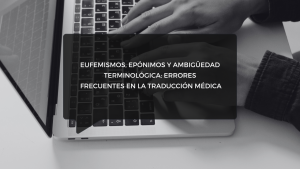In the ever-evolving landscape of language translation and the language industry, one undeniable force stands at the forefront: Artificial Intelligence (AI). The integration of AI and machine learning technologies has ushered in a new era for translators, promising unparalleled opportunities and challenges. To navigate this transformative landscape effectively, it’s essential for translators to grasp ten fundamental concepts that underpin the AI era’s impact on the language industry.
As AI continues to shape how languages are translated and cultures are connected, the knowledge of these concepts will empower translators to harness the full potential of AI while maintaining the integrity and artistry of human translation.
These are some of the key pillars for embracing AI:
Efficiency: AI can assist translators by automating repetitive tasks like translation and providing suggestions. This saves time and allows translators to focus on more creative aspects of their work.
Quality Assurance: Translators need to ensure the quality of AI-generated translations through post-editing. Knowing how AI works helps in making necessary improvements.
Adaptability: The language industry is evolving rapidly with AI. Translators who understand these concepts can adapt to new tools and technologies, staying competitive in the field.
Collaboration: Many translation projects involve collaboration with AI systems. Translators who can work effectively with AI can provide better services to clients.
Here´s a brief overview of 10 essential concepts.
1. Translation Memory (TM)
Translation Memory is a database that stores previously translated sentences or phrases. Translators use TM systems to reuse existing translations, increasing efficiency and consistency.
2. Machine Translation (MT)
MT refers to the automated process of translating text or speech from one natural language to another using computer software and algorithms. This technology aims to enable efficient and rapid translation of content between different languages. More recently, neural machine translation (NMT) has gained prominence, employing deep learning techniques to improve translation quality by capturing context and nuances in language.
3. Post-Editing
Post-editing is the process where human translators review and improve machine-generated translations. It’s a common practice to ensure the quality of AI-generated translations.
4. Artificial Intelligence (AI)
Artificial Intelligence (AI) refers to the development of computer systems that can perform tasks typically requiring human intelligence. This includes understanding language, recognizing patterns, and making decisions based on data.
5. Machine Learning (ML)
Machine Learning is a subset of AI that focuses on the development of algorithms and statistical models that enable computers to improve their performance on a specific task through learning from data.
6. Neural Networks
Neural networks are computational models inspired by the human brain. They consist of interconnected nodes (neurons) that process and analyze data. Deep learning, a type of neural network, has been particularly influential in natural language processing (NLP) tasks.
7. Natural Language Processing (NLP)
NLP is a branch of AI that focuses on enabling computers to understand, interpret, and generate human language. This is crucial for translation and language-related tasks.
8. Supervised Learning
In supervised learning, an AI model is trained on a labeled dataset, meaning it learns from examples with clear input-output pairs. For translation, this could involve training a model on sentence pairs in multiple languages.
9. Generative AI
Generative AI is a subset of AI that involves creating content, such as text, images, or music, using algorithms. In translation, generative AI can be used to automatically create translations.
10. Generative Pre-trained Transformer (GPT)
GPT is a famous generative AI model developed by OpenAI. GPT-3, for example, can generate human-like text and has been used in various language-related applications.




